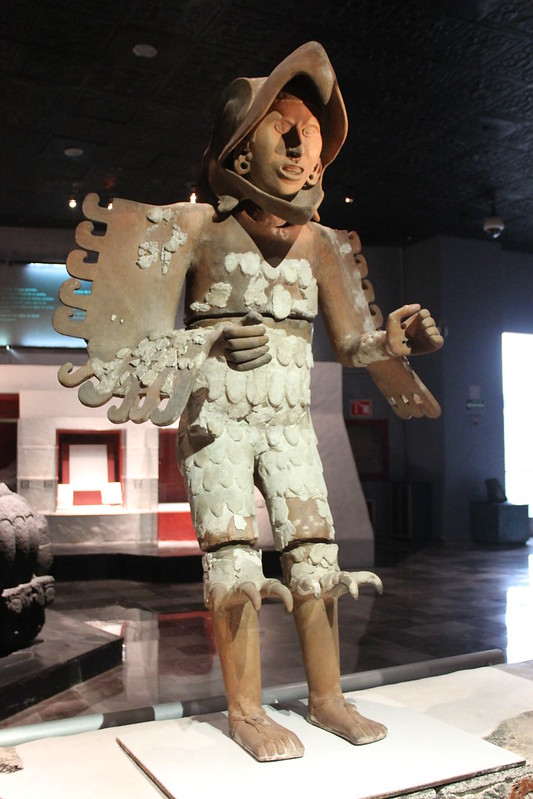79 Meso-American Civilization: Aztec
The Aztec Empire flourished between c. 1345 and 1521 CE and, at its greatest extent, covered most of northern Mesoamerica. Aztec warriors were able to dominate their neighboring states and permit rulers such as Motecuhzoma II to impose Aztec ideals and religion across Mexico. Highly accomplished in agriculture and trade, the last of the great Mesoamerican civilizations was also noted for its art and architecture which ranks amongst the finest ever produced on the continent.[1][2]
Sometime around 1100 CE the city-states or altepetl which were spread over central Mexico began to compete with each other for local resources and regional dominance. Each state had its own ruler or tlatoani who led a council of nobles but these small urban centers surrounded by farmland soon sought to expand their wealth and influence so that by c. 1400 CE several small empires had formed in the Valley of Mexico. Dominant amongst these were Texcoco, capital of the Acholhua region, and Azcapotzalco, capital of the Tepenec. These two empires came face to face in 1428 CE with the Tepanec War. The Azcapotzalco forces were defeated by an alliance of Texcoco, Tenochtitlan (the capital of the Mexica) and several other smaller cities. Over time Tenochtitlan came to dominate the Alliance, its ruler became the supreme ruler – the huey tlatoque (‘high king’)—and the city established itself as the capital of the Aztec empire.[3]

The empire continued to expand from 1430 CE and the Aztec military – bolstered by conscription of all adult males, men supplied from allied and conquered states, and such elite groups as the Eagle and Jaguar warriors—swept aside their rivals. Battles were concentrated in or around major cities and when these fell the victors claimed the whole surrounding territory. Regular tributes were extracted and captives were taken back to Tenochtitlan for ritual sacrifice. In this way, the Aztec empire came to cover most of northern Mexico, an area of some 135,000 square kilometers.[4]
Tenochtitlan
The Aztec capital of Tenochtitlan on the western shore of Lake Texcoco flourished so that the city could boast at least 200,000 inhabitants by the early 16th century CE, making it the largest city in the Pre-Columbian Americas. These inhabitants were divided into several social strata. At the top were local rulers (teteuhctin), then came nobles (pipiltin), commoners (macehualtin), serfs (mayeque), and finally slaves (tlacohtin). The strata seem to have been relatively fixed but there is some evidence of movement between them, especially in the lower classes.
Not only the political and religious capital, Tenochtitlán was also a huge trading center with goods flowing in and out such as gold, greenstone, turquoise, cotton, cacao beans, tobacco, pottery, tools, weapons, foodstuffs (tortillas, chile sauces, maize, beans, and even insects, for example) and slaves.
Tenochtitlan’s water management was also impressive with large canals crisscrossing the city which was itself surrounded by chinampas—raised and flooded fields—which greatly increased the agricultural capacity of the Aztecs. There were also anti-flood dykes, artificial reservoirs for fresh water, and wonderful flower gardens dotted around the city.[5]
- “Aztec Civilization” by Mark Cartwright is licensed under CC BY-NC-SA 4.0 ↵
- "Cortes & the Fall of the Aztec Empire" by Mark Cartwright is licensed under CC BY-NC-SA 4.0 ↵
- “Aztec Civilization” by Mark Cartwright is licensed under CC BY-NC-SA 4.0 ↵
- “Aztec Civilization” by Mark Cartwright is licensed under CC BY-NC-SA 4.0 ↵
- “Aztec Civilization” by Mark Cartwright is licensed under CC BY-NC-SA 4.0 ↵

